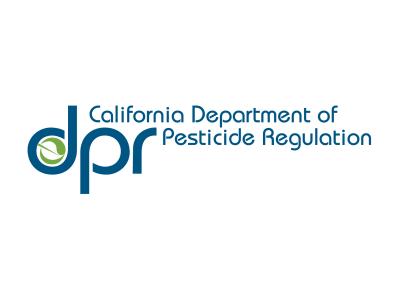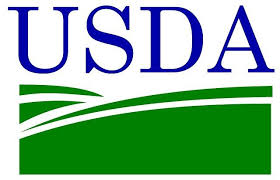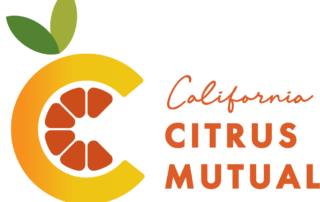Department of Pesticide Regulation Releases 2024-2028 Strategic Plan Driven by Commitment to Sustainable Pest Management, Enforcement, Transparency and Equity
Courtesy of the California Department of Pesticide Regulation
The California Department of Pesticide Regulation released its final 2024-28 Strategic Plan, which outlines measurable goals and objectives to support increased access to sustainable pest management alternatives, improved timelines for evaluating pesticide risks, strengthened statewide enforcement, and increased transparency into the department’s priorities and decision-making.
“Our strategic plan paves the way for safer, sustainable, effective pest management that supports healthy communities, a healthy environment and a healthy, stable food supply,” said DPR Director Julie Henderson. “It charts a course that engages and fosters collaboration among all of our partners and stakeholders to achieve our goals equitably and economically.”
WHY THIS MATTERS
The Strategic Plan outlines how the department will advance four key commitments:
- Increasing access to safe, effective and sustainable pest management.
Supporting the implementation of sustainable pest management through partnerships, research, outreach and education, and improving timelines for the registration of safer alternatives and identifying and mitigating risks from pesticide use. - Tracking, evaluating and enforcing safe pesticide use.
Prioritizing data collection and enforcement in disproportionately impacted agricultural and urban areas; enhancing the capacity of statewide and county enforcement programs; strengthening relationships to inform department priorities and actions; and enhancing worker safety regulations and outreach. - Fostering engagement, collaboration and transparency.
Increasing transparency and access to DPR, including broadening outreach and engagement, expanding language access and strengthening collaboration with the state’s Native American tribes. - Promoting organizational excellence and innovation.
Building and maintaining a diverse, innovative, collaborative workforce that acts with urgency and efficiency.
The 2024-28 Strategic Plan outlines specific departmental goals and timelines to achieve each of the plan’s objectives. The plan aligns with the requirements outlined in AB 2113, the policy bill that accompanied funding the department received in the 2024-25 State Budget, including improved timelines for registering pest management alternatives and re-evaluating high-risk pesticides. The final plan was informed by broad stakeholder engagement and public comment collected on the draft plan in fall 2023.
The 2024-28 Strategic Plan can be found on DPR’s website.
STRATEGIC PLAN PROGRESS UPDATES
DPR is on track to achieve key 2024 and upcoming 2025 goals, including:
Launch of CalPEST in 2024: Complete
In September 2024, DPR replaced its outdated paper-based pesticide registration process with a web-based system, CalPEST, to streamline evaluation and registration to increase and accelerate access to safer alternatives.
Launch of Language Access Hub in 2024: Complete
In March 2024, DPR introduced the Language Access Hub to provide translation and interpretation support for county agricultural commissioners (CACs) to use when interacting and engaging with the public. Language access supports an effective enforcement program by improving the ability of non-English speakers to engage with CACs and report pesticide incidents.
Launch of New, Improved DPR Website in 2025: On track for launch in early 2025
DPR is in the process of redesigning the department’s website to improve user experience and access to regulatory and other actions and documents, health and safety information, sustainable pest management resources, and other information and materials.
Launch of Statewide Pesticide Application Notification System in 2025: On track for launch in the first quarter of 2025
The department noticed the final regulation to implement a statewide pesticide notification system that will provide advance information about restricted material pesticide applications. DPR anticipates launching the system statewide in the first quarter of 2025.
Issue Timeline Projections for Scientific Data Evaluations and Registration by 2025: On track for launch in early 2025
Aligned with the requirements in AB 2113, DPR will improve the transparency of and provide projections for pesticide evaluation and registration timelines.
Establish a Science-based Pesticide Prioritization Process Informed by an Advisory Committee and Public Input by 2025: On track for launch in 2025
DPR will establish a public, science-based process that will be informed by a scientific advisory committee and public input to prioritize high-risk pesticide evaluations, identify and evaluate the availability and feasibility of alternatives, and identify expeditious action for mitigation.
Convene an Environmental Justice Advisory Committee by 2026: On track for launch by 2026
Governor Newsom signed AB 652 in October 2023, requiring DPR to convene an Environmental Justice Advisory Committee by January 1, 2026. This advisory committee, as outlined in AB 652, will provide prioritized recommendations to DPR on ways to integrate environmental justice considerations into department programs, policies, decision-making and activities, and on how the department can improve its engagement with communities with the most significant exposure to pesticides. This will provide opportunities for regular, transparent and meaningful access to DPR to increase awareness of and inform department programs, decision-making and actions.
To view a recap of the department’s work and process over the last five years, see the department’s progress report.


















